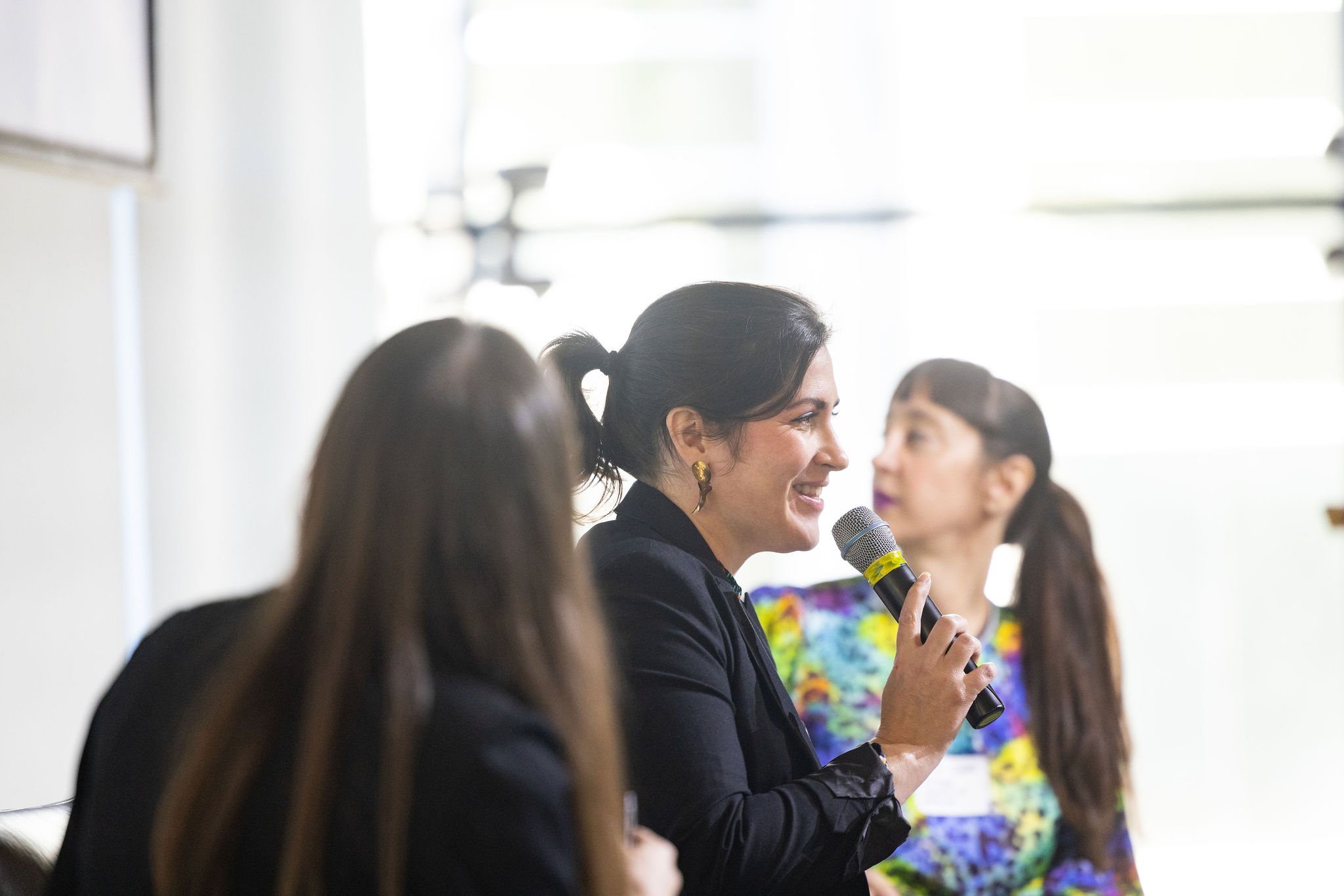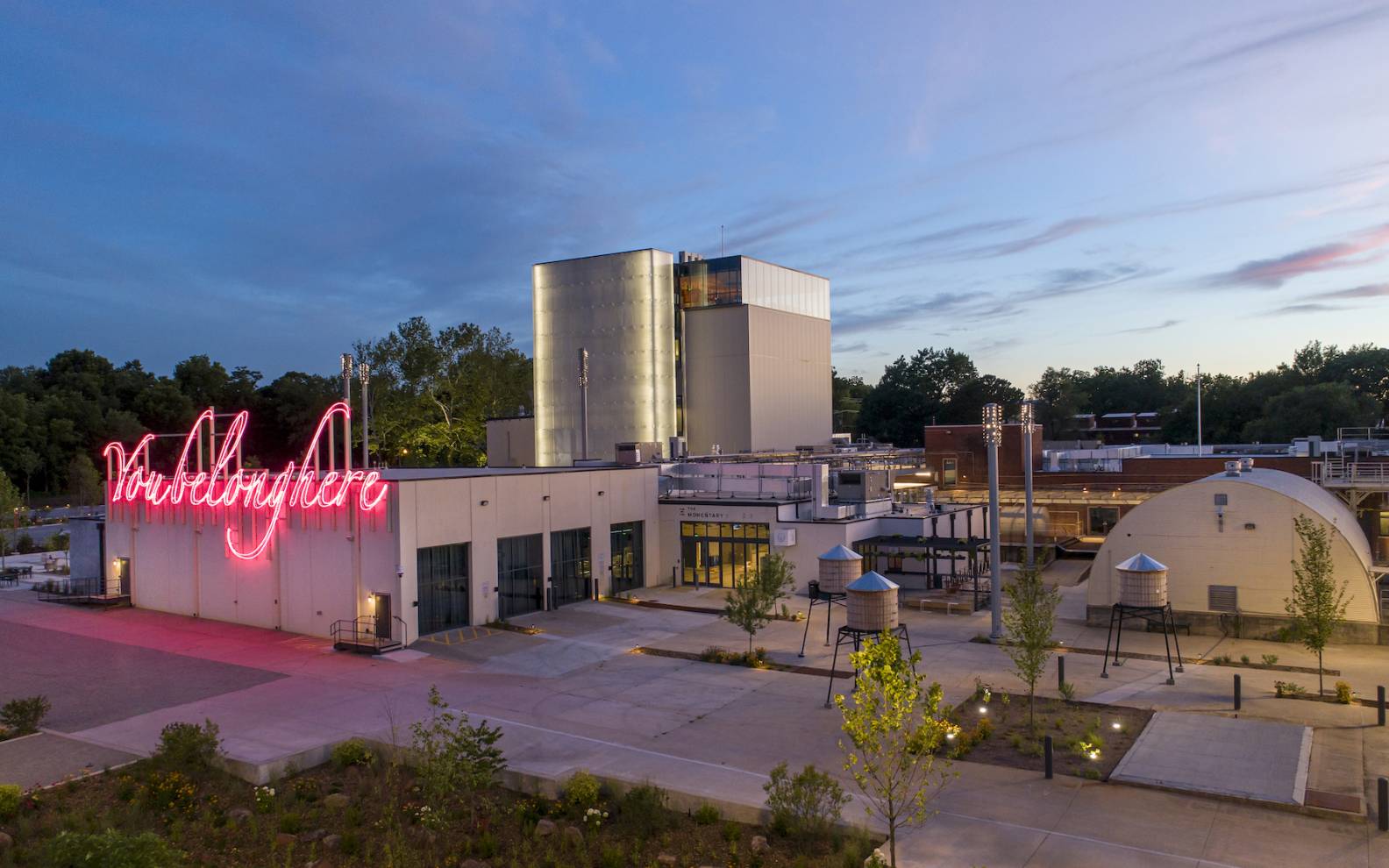
Internships
Internship opportunities in major cultural institutions as well as cutting-edge experimental programs prove students with hands-on experience with objects and collections or lived experiences in programming with artists and the public.
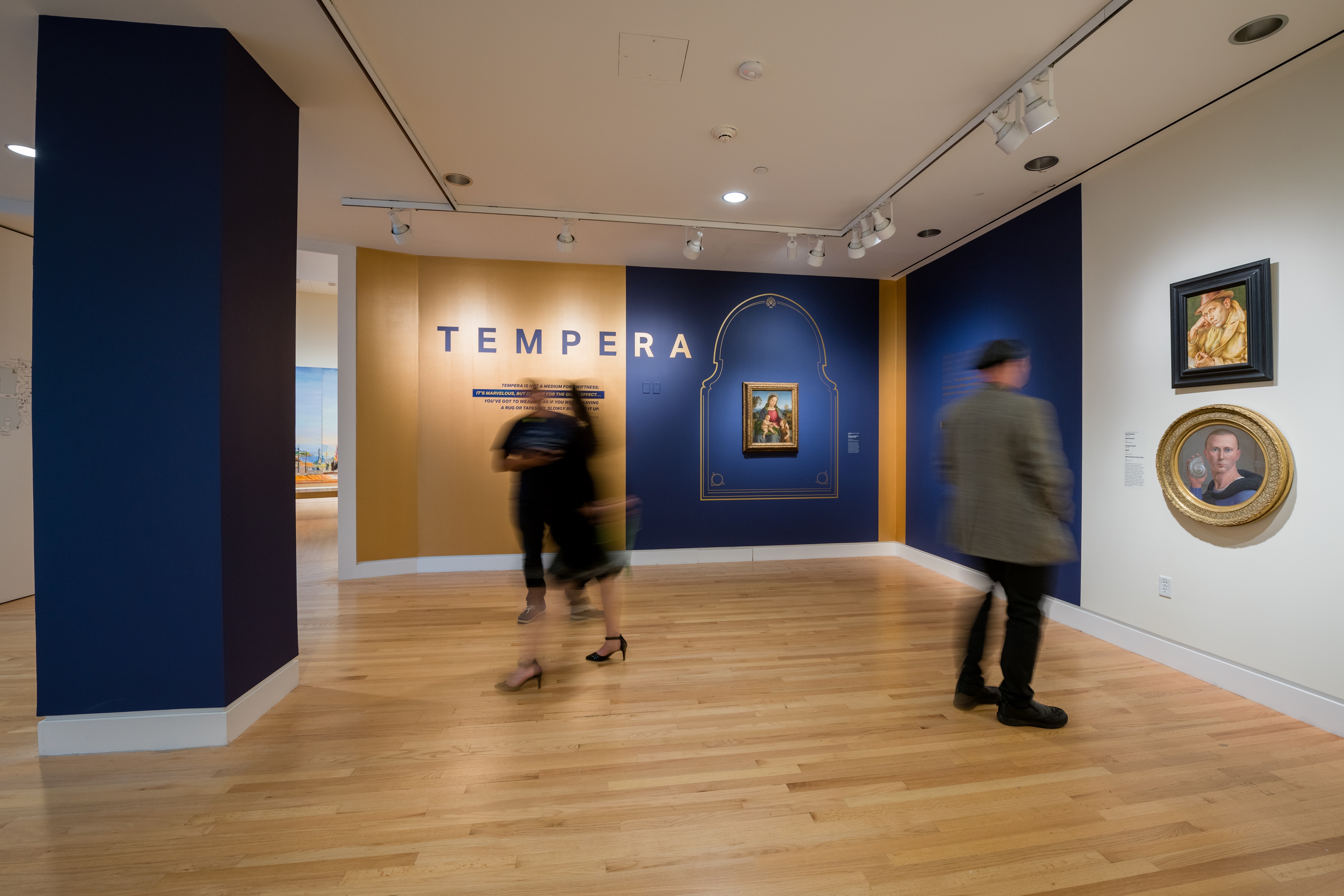
Crystal Bridges museum of american art
Crystal Bridges' permanent collection spans five centuries of American art from early American to the present. Committed to telling broad and inclusive American stories, the museum actively acquires works by artists underrepresented in art history and innovates exhibition and educational engagement practices along with hosting researchers and artists.
The Momentary
A satellite contemporary art space of Crystal Bridges in downtown Bentonville, The Momentary is a multidisciplinary space for visual arts, performing arts, culinary experiences, festivals, and artists-in-residence offering dynamic programs and experiences.
Additional institutions
With the approval of the Graduate Director, students can arrange internships through local institutions such as Art Bridges, The University of Arkansas Press, Creative Arkansas Community Hub & Exchange (CACHE), Art Ventures, and/or institutions further afield.
|
"My time as a curatorial intern for Art Bridges was meaningful for both my intellectual and professional development. As part of the internship, I helped develop two exhibits and worked on researching and writing about new acquisitions, like Rashid Johnson’s Untitled Escape Collage. I am so energized by the important work Art Bridges does, and loved being part of the team so much that I have continued my relationship with the organization as a curatorial research assistant. A show I’ve worked on is opening in the fall, and it will be my first curatorial byline!" Ibby Ouweleen '25 |
|
Alex Betz '25 |
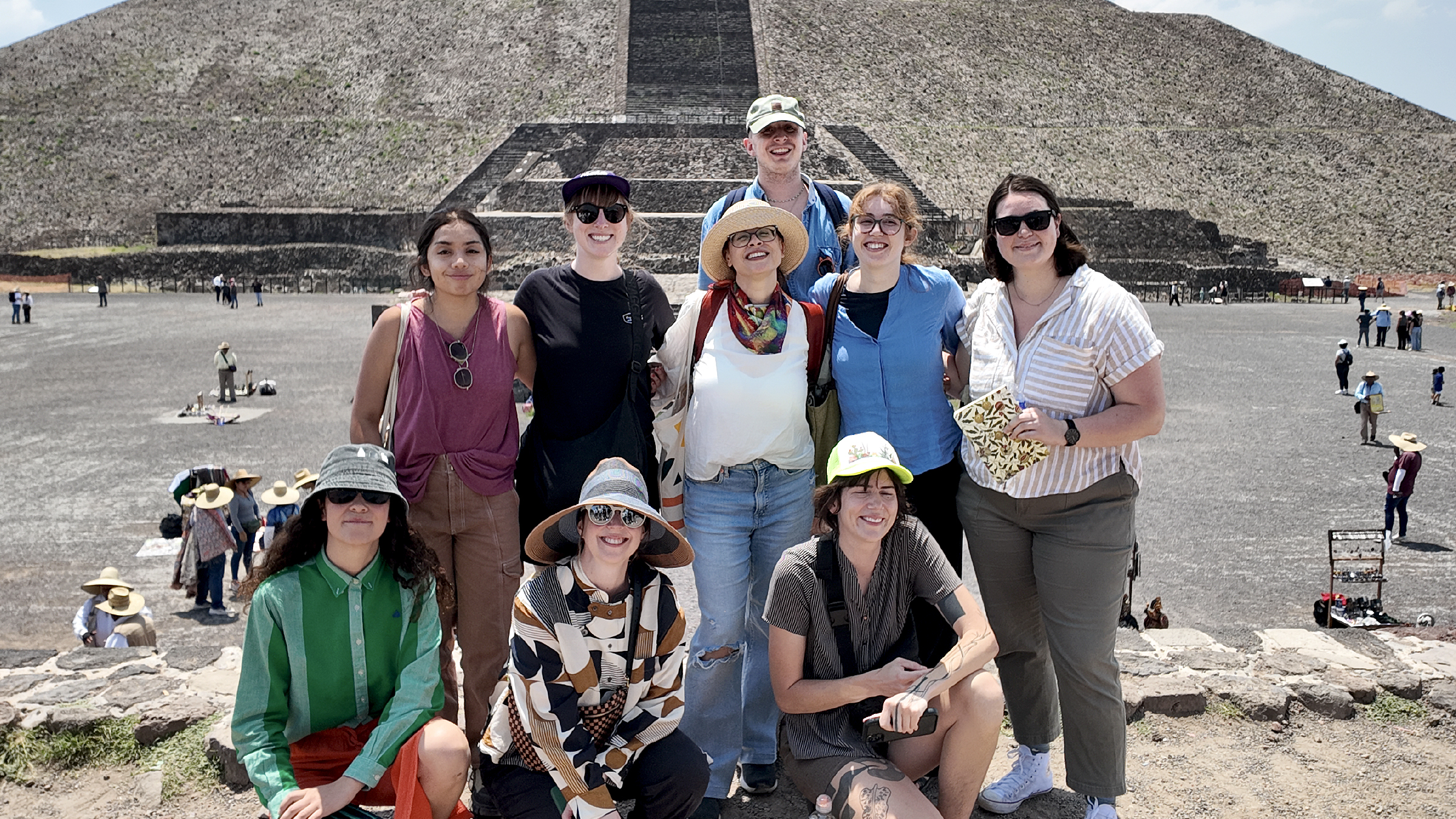
TRAVEL
Immersive travel courses offer unprecendented access to private collections, behind-the-scenes tours by museum curators, visits to off-the-beaten-path public art collections, and discussions with scholars.
May 2024 Immersive Travel Intersession in Mexico City
Taught by Dr. Ana Pulido Rull and Dr. Alexis Salas
This immersive travel course invited graduate students to experience the arts and architecture of Mexico stemming from different moments of its history: Mesoamerican, Colonial, Modern, and Contemporary. This 10-day trip included visits to Mexico City with day trips to Teotihuacan and Acolman. Students visited archaeological sites, museums, colonial monasteries, public monuments, artist collectives, and archival collections. Students had the opportunity to learn from faculty members from the National Autonomous University of Mexico, cultural agents, museum curators, and artists residing in Mexico. Through these experiences, students deepenend their knowledge about the history and contemporary realities of Mexico and its rich artistic production.
|
Djamila Ricciardi '25 |
December 2024 Field Trip to the Brooklyn Museum of Art
This field trip gave students the chance to meet, in person, Dr. Stephanie Sparling Williams, the Andrew W. Mellon Curator of American Art at the Brooklyn Museum of Art. Williams made regular virtual visits to the Graduate Art History Writing Workshop as the MA Program’s Visionary for 2024-2025, working with Dr. Jennifer Greenhill to support students as they developed a writing practice and made progress on their Qualifying Papers. At the Brooklyn Museum of Art, students toured Williams’s groundbreaking reinstallation of the American galleries, Toward Joy: New Frameworks for American Art.
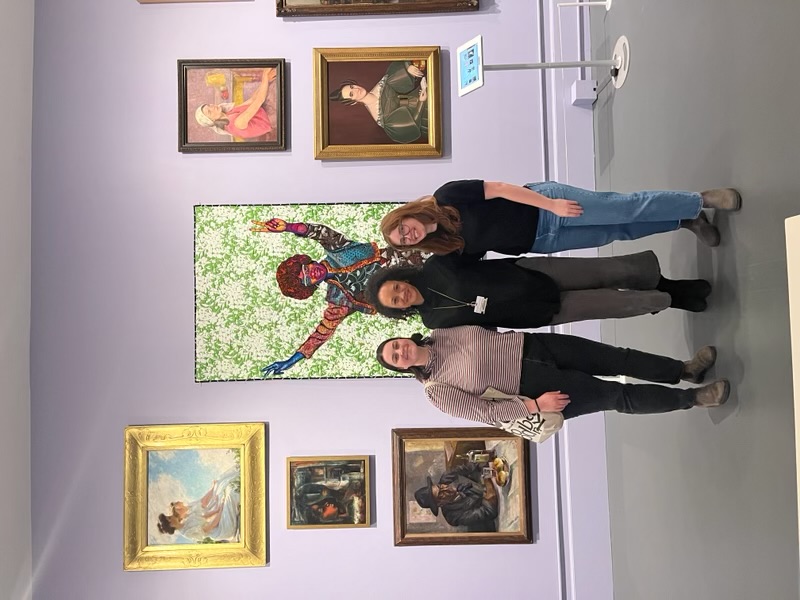
In December of 2024, the Arts of the Americas MA students had the distinct joy of taking a trip to New York City to see the Brooklyn Museum’s reinstallation of their American Art collection. We were toured through this innovative exhibit by Stephanie Sparling Williams, the museum’s Andrew W. Mellon curator for American art and a guest faculty member who co-taught the 2nd-year cohort’s writing workshop in the fall.
After early-morning flights from Bentonville to LaGuardia, students from both 1st and 2nd-year cohorts regrouped at the Brooklyn Museum for our 1pm tour. Sparling Williams grounds her curatorial practice in a Black Feminist intellectual tradition. The exhibit, Toward Joy: New Frameworks for American Art, seeks to reorient the museum public’s relationship with American art. The installation dislodged fraught historic narratives and representations, while creating renewed opportunities for productive encounters with such works. Sparling Williams is explicit about trying to move beyond an “add and stir” approach, wherein collections are diversified but not thoroughly restructured. Through Sparling Williams’ curating, overlooked works and artists were given their flowers, nestled in robust, generative analytical frameworks that reshape viewers' approach to the whole collection. One student commented that “seeing this exhibit and learning about the process of bringing it together was an extraordinary experience. I am struck by how effectively and earnestly Stephanie communicated her priorities and ambitions through this re-hang. This is the most radical approach I’ve ever seen to a permanent collection, and it really pushes the limits of what I imagined possible in a museum space. Toward Joy and working with Stephanie has greatly impacted my thinking and learning. And I felt like a VIP in the museum getting a tour from such a brilliant curator!”
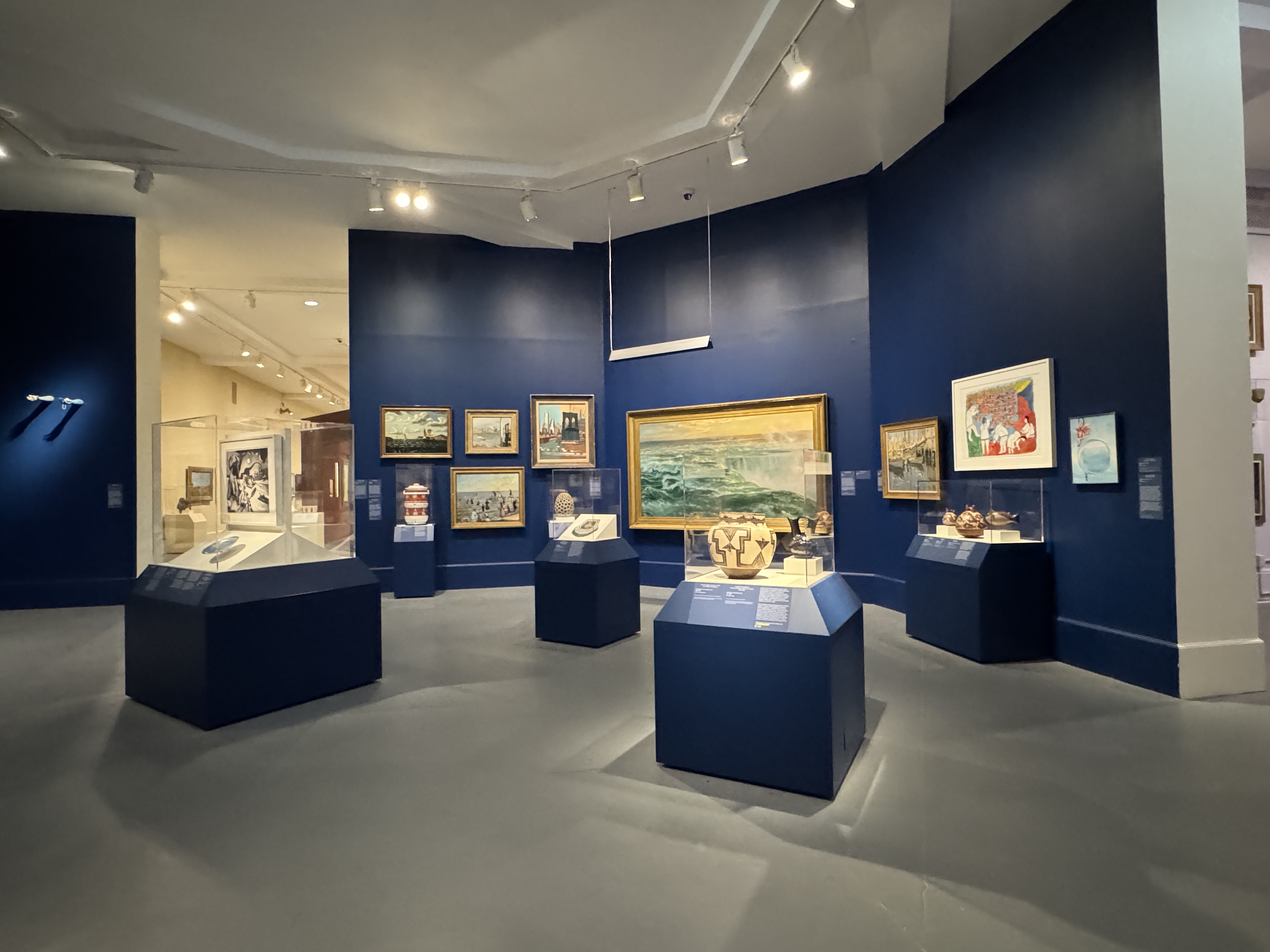
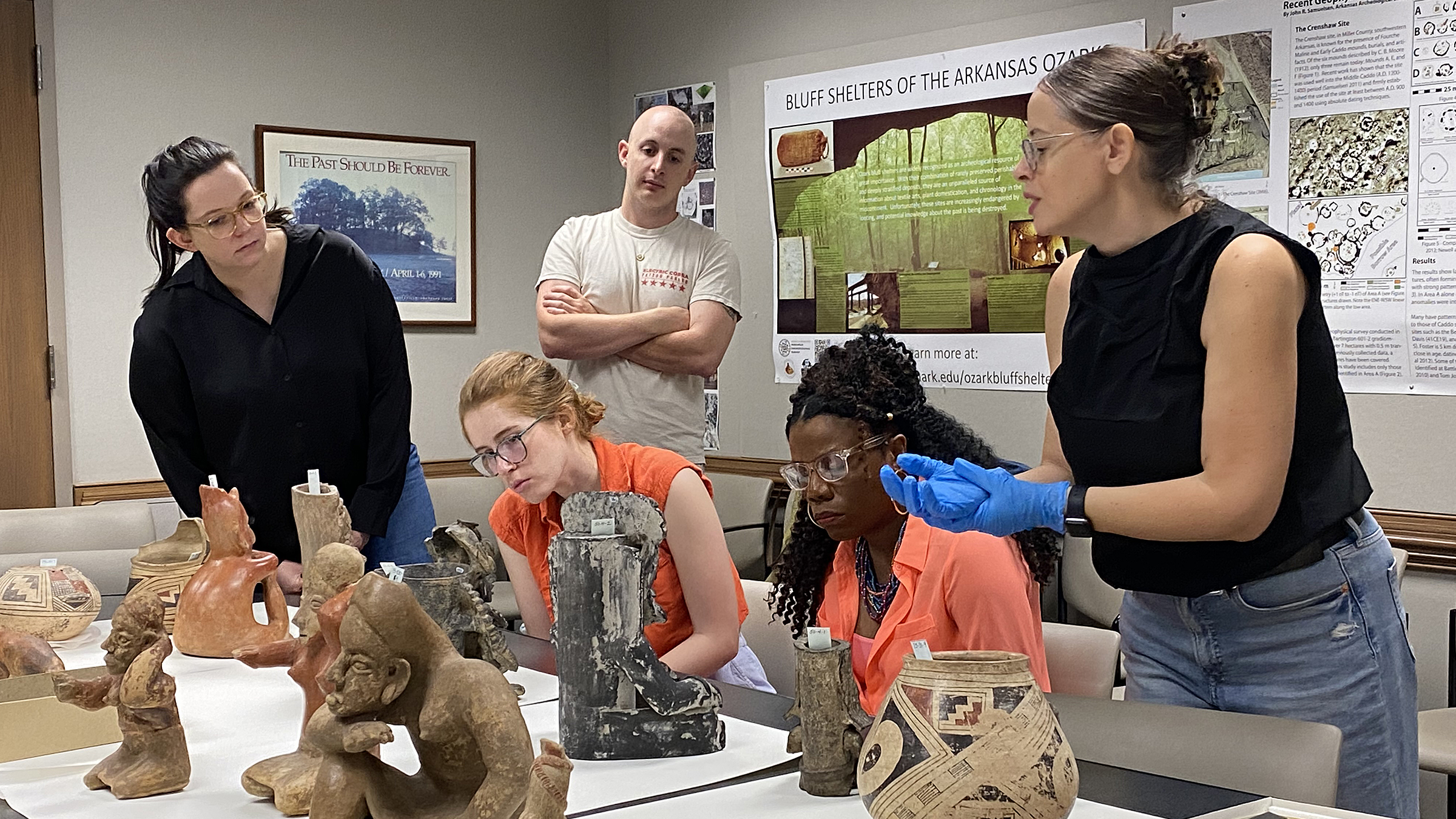
Course Spotlights
Students take graduate courses informed by a variety of themes fundamental to an understanding of arts of the Americas in a global context.
Past courses offered

Case Studies in Art History and Curatorial Practice: Takaezu & Tawney: An Artist is a Poet
This course explored the inner workings of a museum through a single exhibition at Crystal Bridges Museum of American Art, Takaezu & Tawney: An Artist is a Poet. Taught by the museum’s Windgate Curator of Craft, Dr. Jen Padgett, the seminar offered behind-the-scenes insights into curatorial work and the making, display, interpretation, and acquisition of objects. Students learned about groundbreaking artists in craft while developing analytical and writing skills relevant to the museum field.
Fall 2024 seminar taught by Dr. Ashley Holland, Curator & Director of Curatorial Initiatives, Art Bridges Foundation
This course explores the foundation and development of contemporary Native American art through a centering of Indigenous knowledge, world views, and voices. Recognizing the falseness of borders, it looks at artists from what is now known as Canada and the United States working in a variety of media. It interrogates the scholarship, exhibitions, and art forms that have shaped the field historically through the present. The course emphasizes class discussions, presentations, and a final project with corresponding paper. First-hand study of objects at Crystal Bridges and the Momentary and other area collections, and regular class visits by practicing artists, are fundamental to the course.
Spring 2024 seminar taught by Dr. Jennifer Greenhill, Endowed Professor of American Art
This course explores the aesthetic and social operations of “Americana,” roughly defined as “things associated with the culture and history of the United States.” It does so by focusing largely on the period between the 1870s and the 1940s, when the concept of Americana was codified (and, arguably, invented) through exhibitions, collecting practices, and widespread efforts to understand the present through various “usable pasts.” Gallerists such as Edith Halpert and institutions like the Museum of Modern Art in New York will be important to our conversations, as will some of the key art movements of the period. But we will typically approach Americana through fine-grained analyses of individual case studies that may complicate catch-all categories such as “Regionalism” or “Colonial Revival.” We will also work to complicate conventional stagings in the existing scholarship of “period rooms,” for example, and “folk art” through occasional mash-ups of unlike things. This is meant to prompt creative thinking about historical material, compel you to push back when necessary, and inspire you to take risks in your own writing. Although we will focus on historical material, contemporary artists will pop up throughout, such as Bethany Collins, Kent Monkman, Danh Vō, and Titus Kaphar.
|
Student reflection: Ella Nowicki ‘25 This seminar achieved its goal to spark creative thinking about historical material. One week combined early displays of American decorative arts at the Met, Van Wyck Brooks’s call to invent a national “usable past” in 1918, cultural historian Philip Deloria’s discussion of summer camps as spaces where white Americans have “played Indian,” and queer theorist José Esteban Muñoz’s concept of “disidentification.” These remixes jolted me into thinking about art history as a practice of critically constructing new usable pasts vs. exposing tactical uses of the past to access historical truth. To me, the relationship between these tasks is unresolved but not mutually exclusive. |
Fall 2024 seminar taught by Dr. Ana Pulido Rull, Associate Professor
This seminar examines space as a category for art historical analysis in Mesoamerica and New Spain. Space is a cultural and social product; it is created by the people who inhabit these spaces and informed by their ideology. The first part of the semester studies Indigenous ideas of space in preconquest Mesoamerica. We then examine what happened to these ideologies and practices when the Spaniards arrived in the Americas in the sixteenth century and colonized Indigenous lands. Throughout the colonial period, Indigenous communities participated actively in the defense of their territories and used Spanish laws to their advantage. They used a series of strategies or spatial practices to shape the politics of land distribution. These political, social, and artistic practices helped Indigenous communities keep some of their territories and redefine the administrative boundaries of their lands, even while living under a colonial rule. We will study some of these spatial practices and underscore how they helped shaped land distribution.
|
Djamila Ricciardi, '25 |
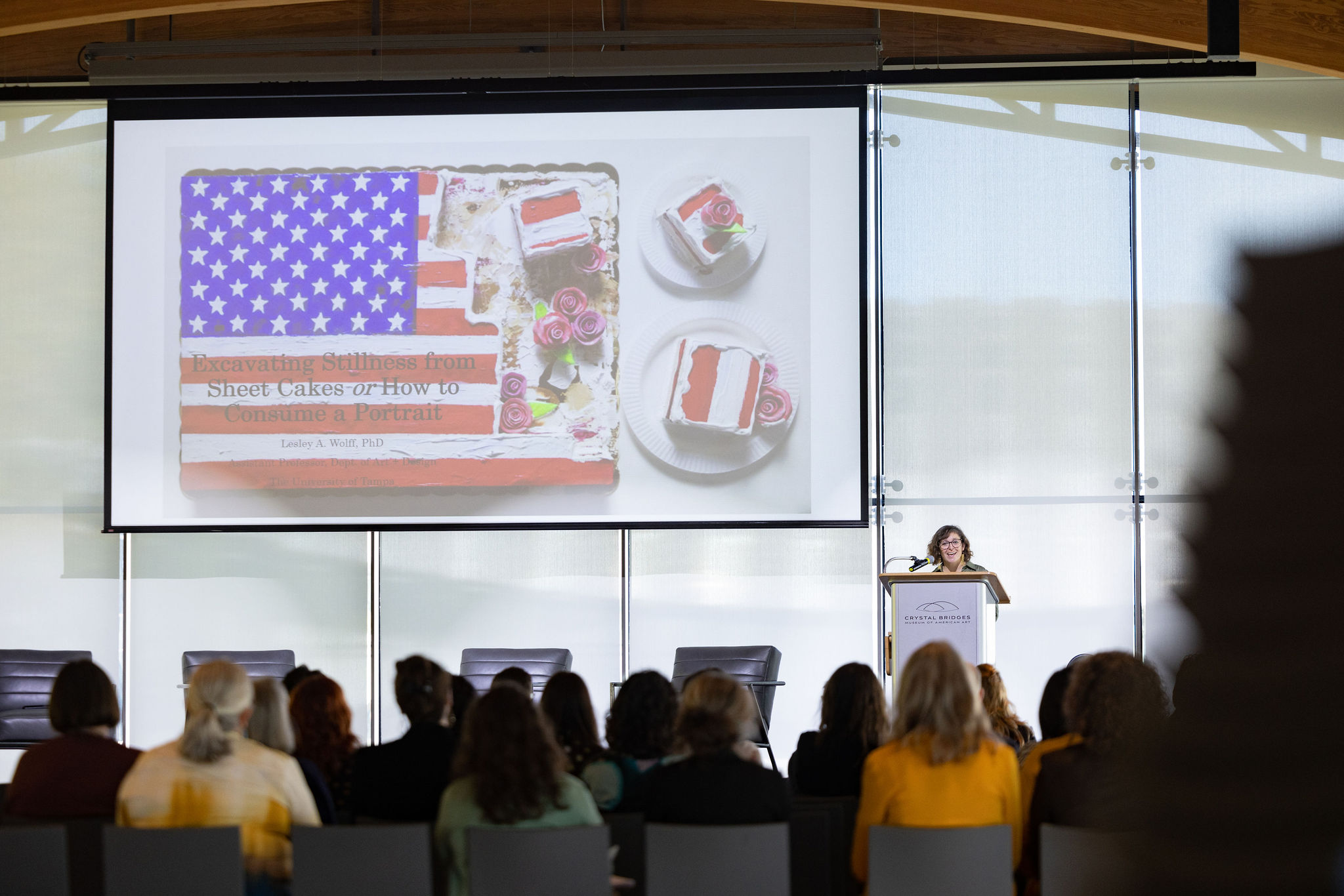
Events
Students participate in and conduct a wide variety of events that help strengthen the principles they learn while part of their time in the program.
Upcoming Events
March 2025
Animal Stories: Non-Human Animals in the Arts of the Americas
Organized by Dr. Jenn Marshall (Professor of Art History, University of Minnesota,
and 2025 Tyson Scholar for Graduate Mentorship and Collaborative Initiatives)
March 2025
35th Annual Arkansas Art History Undergraduate Symposium
Organized by Dr. Akshaya Tankha, hosted by the Art History Program, University of
Arkansas
Past Events
February 2025
Organized by Aaron Turner, Serena Caffrey, and Elise Boulanger (Osage). Hosted by Center for Art as Lived Experience (CALE) and supported by the Terra Foundation for American Art.
November 2024
MA/Arts of the Americas students meet members of the Association of Research Institutions in Art History.
In November 2024, Crystal Bridges hosted the annual meeting of the Association of Research Institutions in Art History (ARIAH), of which the museum is a member alongside organizations including the Getty, the Smithsonian, and the Art Institute of Chicago. ARIAH is “a consortium of research institutes dedicated to the study of arts and material culture. The consortium works to strengthen the work of its member institutions through partnership, dialogue, grant making, and advocacy for scholars.” Representatives from more than ten organizations met with Arts of the Americas students at a lunch and roundtable conversation. The conversation offered valuable insights into the world of research, fellowships and funding, and the importance of thoughtful archival collaboration. Students were honored to have met so many scholars and administrators doing such important work, and they were struck by the generosity of the people present.
|
Conversation with the Knowing the West Curatorial Advisory Committee In advance of the public opening of the exhibition Knowing the West: Visual Legacies of the American West (September 14, 2024 – January 27, 2025), students in the MA program participated in a round-table discussion with members of the exhibition’s Curatorial Advisory Committee. This exhibition sought to present new and compelling stories about the shifting mythologies of the American West, showcasing more than 120 objects and including many lesser known (or, as many exhibition labels read: once known) Black, Indigenous, and Hispano artists. This project was guided by N. Besaw, Jami C. Powell (Osage), and Larissa Randall. Randall is, in fact, a current MA Art History graduate student and seeing one of our classmates at the helm and in her element was a treat. The Curatorial Advisory Committee is a who’s who list of scholars who are interested in unsettling the established notions of the “American West”: Jordan Poorman Cocker (Kiowa), Kirsten Pai Buick, Chelsea M. Herr (Choctaw Nation of Oklahoma), Michael R. Grauer, Laura F. Fry, Christina E. Burke, Michael W. Hartman, and Scott Manning Stevens (Akwesasne Mohawk Nation). Knowing the West was conceptualized by way of a collaborative curatorial method. By showcasing more than 120 objects and including many lesser known (or, as many exhibition labels read: once known) Black, Indigenous, and Hispano artists, the committee set out to expand the canon of American art. In a sense, MA Art History/Arts of the Americas students had a chance to see first-hand curatorial practice as a recovery effort, enlivening the narratives and lifeways of people whose voices have long been silenced. |
January 2024
Co-organized by Julia Silverman (PhD candidate, Harvard University; Research + Teaching Fellow, 2022-2023, University of Arkansas Art History Program), Mary McNeil (Tufts University), and local multimedia artist Cory Perry.
In the last decade, Northwest Arkansas has emerged as an increasingly important hub for art and culture. New art institutions and non-profits have been critical in bringing artists and artworks to the area, creating dynamic cross-regional exchanges between Northwest Arkansas and other US cities. However, these major institutions have also controlled narratives about art in the region, often prioritizing artists from elsewhere and overlooking the rich regional history of craft that exists—and has always existed—in the Ozarks. This symposium brought together artists working in and around the Ozarks today to explore histories and futures of arts and craft production in the region.
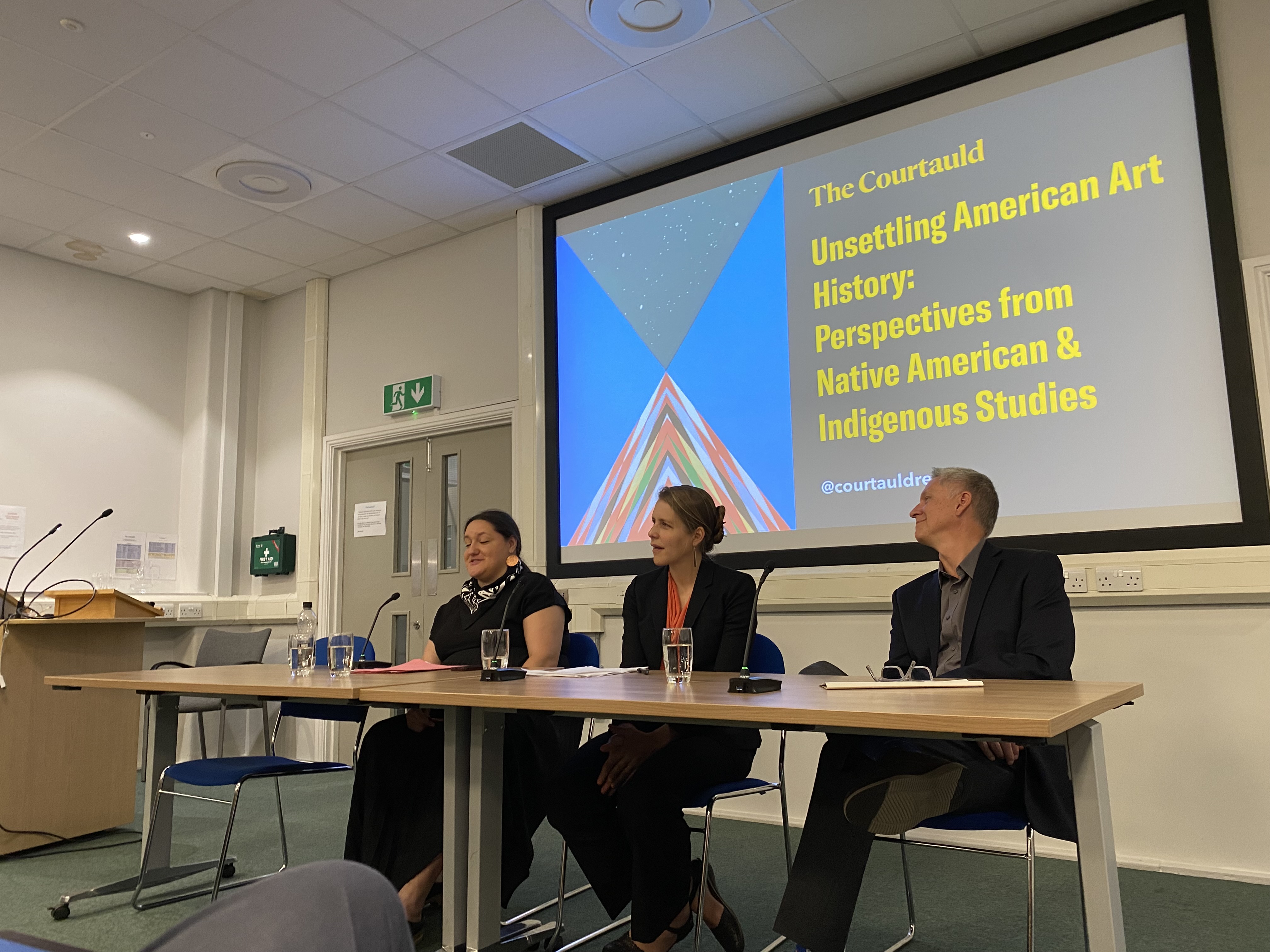
June 2023
Co-organized by Amy Lonetree (Ho-Chunk) and Sascha Scott, Centre for American Art, Courtauld Institute of Art, London.
This symposium gathered an interdisciplinary group of scholars, artists, and curators whose work both engages with 19th– and 20th-century Indigenous art/history and is framed by the field of Native American and Indigenous Studies. Indigenous studies scholars adopt diverse tactics for challenging settler structures and narratives, including decolonial (or anti-colonial) calls for restoration, restitution, and reparation; truth-telling and ethical research methodologies; Indigenizing dominant structures via Indigenous presence and voices; recognizing Indigenous sovereignties through consultation and partnerships; embracing story-telling and storywork as powerful methodologies; and considering place, relationality, community, and kin, both human and more-than-human, as central to Indigenous knowledges.
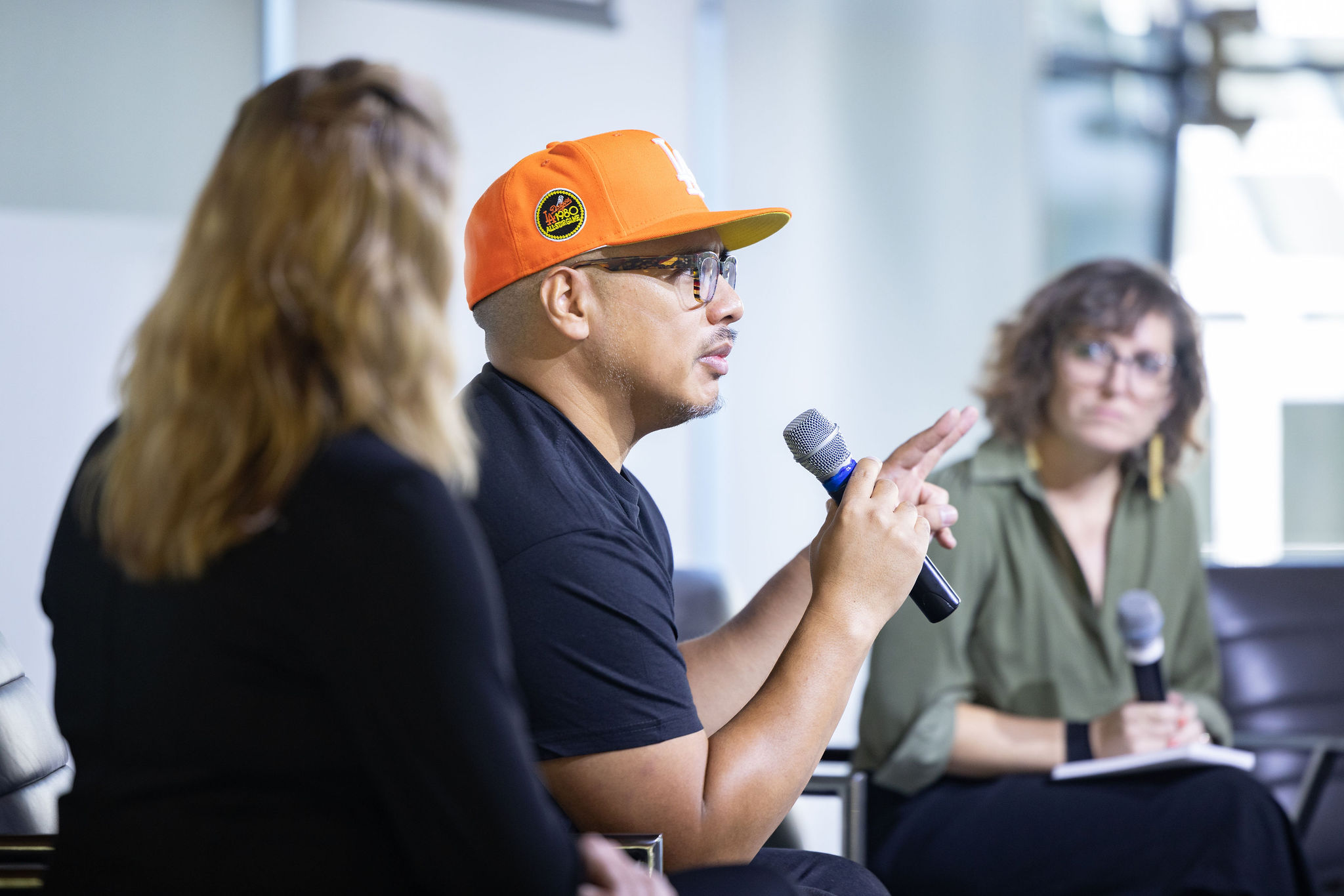
October 2022
This two-day event celebrated ten years of the Tyson Scholars Fellowship Program at Crystal Bridges with a morning of workshops on topics including “Queering Art History: Epistemological Rebellions,” “Landscapes: What Do They Tell Us About Society?” and “Arts Philanthropy in Turmoil: The Museum-Industrial Complex.” Workshop leaders and participants included Andy Campbell (USC), Laura G. Gutiérrez (UT Austin), heather ahtone (First Americans Museum), Michaela Rife (University of Michigan), Erika Doss (University of Notre Dame), Nizan Shaked (California State University, Long Beach), and Summer Wilkie, John Blakinger, and Alexis Salas (University of Arkansas). The afternoon program included conversations with artists, including Patrick Martinez, Anna Tsouhlarakis, and Consuelo Jimenez Underwood.
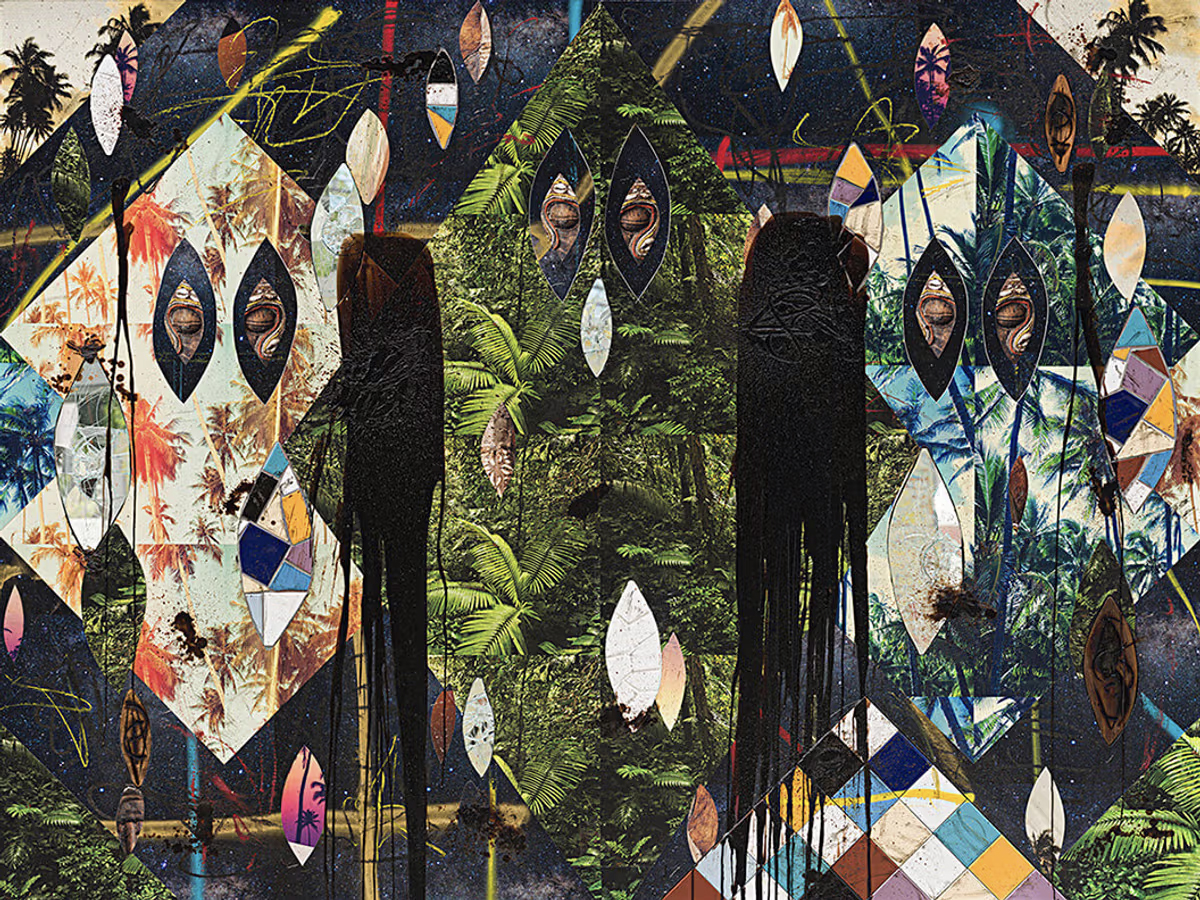
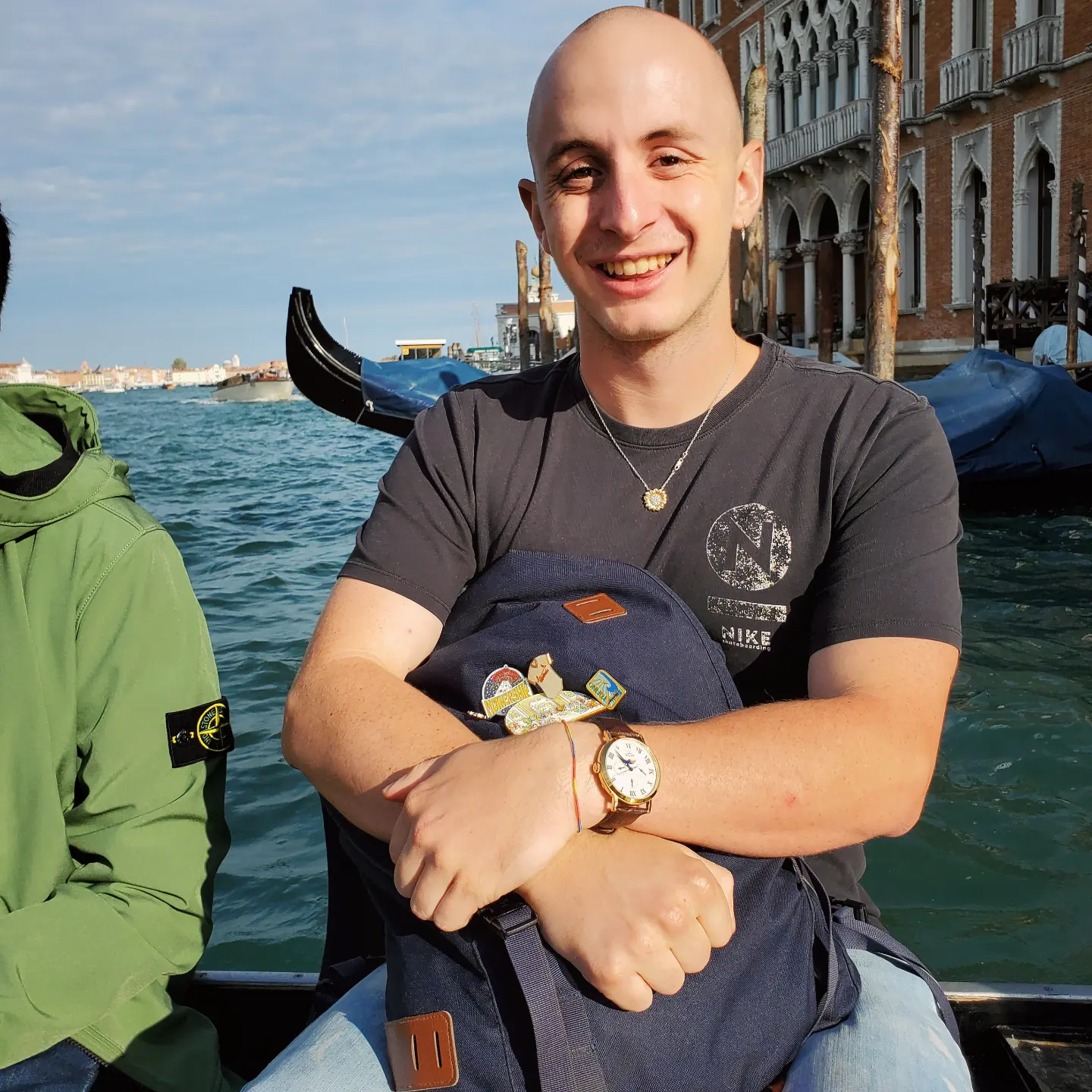 "
"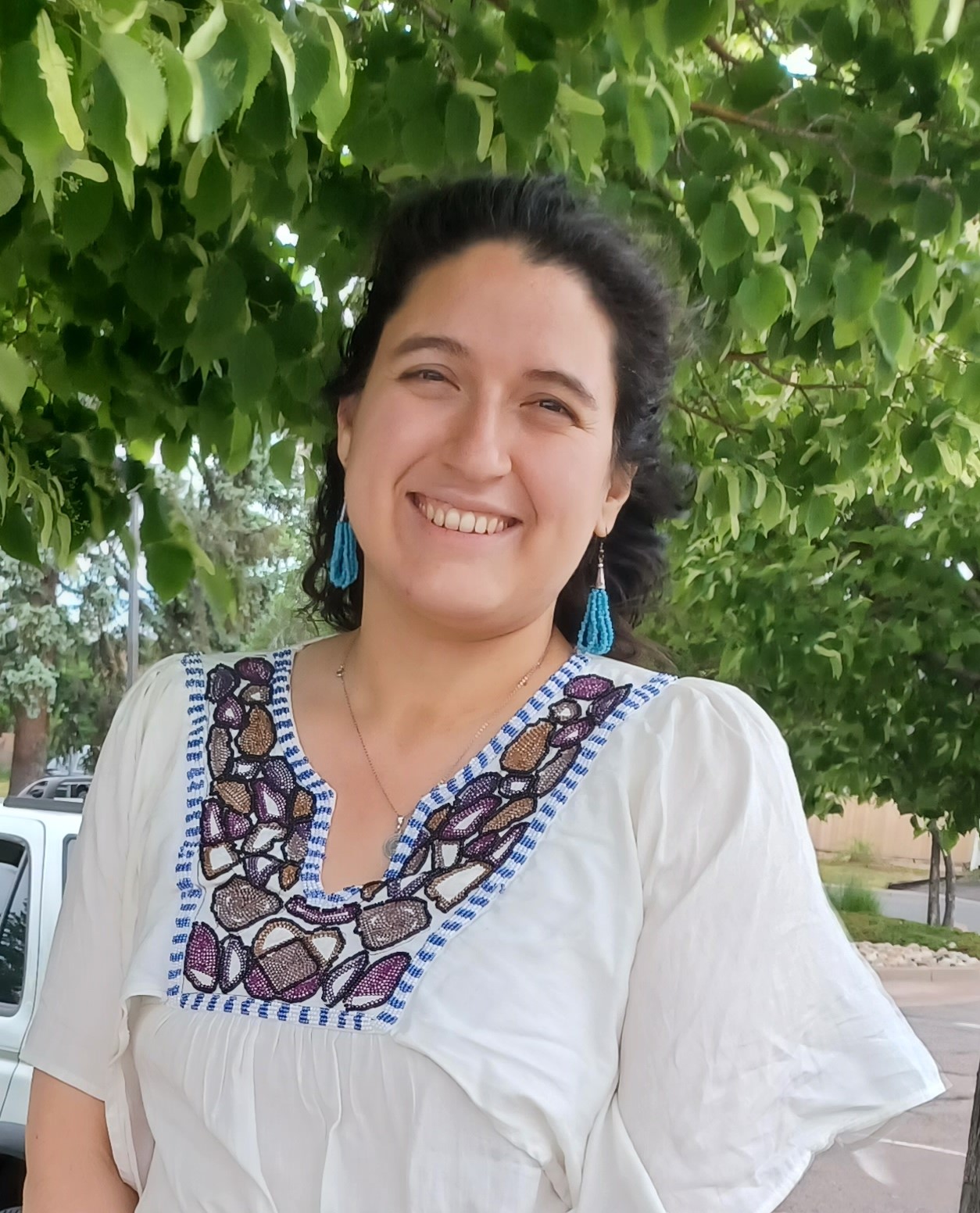 "Throughout my immersive travel experience to Mexico City, we came to better understand
how the past and present artfully co-mingle in Mexico City. Each day’s itinerary was
as densely packed and vibrant as the city itself. This opportunity really expanded
my knowledge about the factors that impact art-making practices and support structures
for artists across the Americas."
"Throughout my immersive travel experience to Mexico City, we came to better understand
how the past and present artfully co-mingle in Mexico City. Each day’s itinerary was
as densely packed and vibrant as the city itself. This opportunity really expanded
my knowledge about the factors that impact art-making practices and support structures
for artists across the Americas."